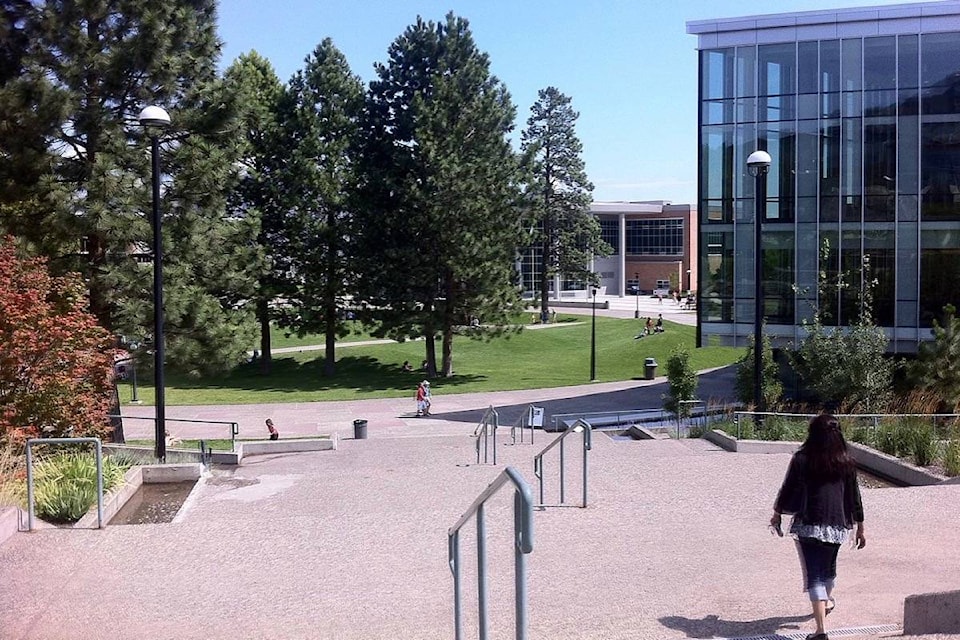A delegation from Thompson Rivers University (TRU) has made 50 “Fund the Future” presentations to local and regional groups over the last few months, making the case that TRU is being significantly underfunded in comparison with many other provincial post-secondary institutions; and their goal is to have the provincial government review its post-secondary funding formula, so that TRU can achieve something closer to parity.
In 2005, when what was then the Community College of the Cariboo became Thompson Rivers University, the number of targeted students was put at 8,000, and funding was set accordingly. However, TRU now has close to 8,500 students, while provincial funding—approximately $64 million per year—has remained the same since 2009.
This means that out of 25 post-secondary institutions in the province, TRU ranks 16th when it comes to targeted per-student funding, and 20th in actual per-student funding. “The per-student amount we receive is historically lower than the targeted amount,” says Leif Douglass, campaigns coordinator for the TRU Student Union (TRUSU). He says that the targeted number of students—8,000—has remained steady since 2007, but actual enrolment now exceeds that.
He agrees that in some ways, TRU is a victim of its own success. “We’re growing continuously, but that’s not recognized.”
The comparative lack of funding for TRU students could have an impact on the university, the city, and the region. TRU is the fourth largest employer in the Thompson-Okanagan region, and the students who attend the university contribute a lot to the economy, as well as providing a major source of employees for Kamloops businesses. “This would be a very different city without students,” says Douglass.
Cole Hickson, a third year TRU student in political science and economics, says that as a student the issue of underfunding is close to his heart. “It’s an important thing, as a student at TRU and a resident of Kamloops. There are a lot of different programs, and it’s hard to speak on behalf of all of them.
“But we have consistently seen TRU have a higher enrolment than the funds that are targeted.”
The TRUSU has calculated that the average TRU student receives 46 per cent government funding, 10 per cent other funding, and pays 44 per cent of the user fees. By comparison, the average UNBC student receives 64 per cent government funding, 13 per cent other funding, and pays only 23 per cent of the user fees.
The TRUSU argues that TRU students cannot continue to fall behind when it comes to funding, since underfunding at TRU affects the entire community. It also affects the affordability of TRU for students within the region, and Hickson says that foreign students are an important source of income for TRU.
“They add diversity, and make it a more multicultural campus, but they’re also seen as revenue units, contributing a huge chunk of the operating funds for TRU.”
Advanced Education minister Melanie Mark said last week that funding equity is an issue that she is not ignoring. “I am working with my ministry staff and I am leaning in. I think we have to address a bit of a myth that there is full time equivalent funding; there is block funding. It gives flexibility to the institutions so that they can invest in the areas that are important to them. Not all seats are the same. A medical seat is very different from an arts seat.”
Hickson says that while they have not had formal talks with Mark yet, he was able to meet with her last August when she visited TRU. “I spoke with her about funding inequity at TRU, and she was relatively responsive.”
The end goal is to finish the regional presentations, collect as many letters of support as they can (they currently have 19), collect pledges of support (they have 3,700 so far), look at the feedback received, and then make a formal presentation to Mark. “We want to go there with the momentum of community support behind us,” says Hickson, adding that while they have 10 more scheduled regional presentations to make, they are happy to present to any community group interested in hearing from them.
“We would love to talk to them, and get as much regional support as possible before talking to the minister.”
Douglass says that “We want to get the government to re-evalute and review how TRU is funded. We’ve grown so much, and we haven’t had the funding. More funding would be beneficial to us, especially for graduate studies.”
Any groups interested in arranging a presentation should email campaigns@trusu.ca. To sign on online pledge of support for the “Fund the Future” campaign, go to the advocacy section of www.trusu.ca.
editorial@accjournal.ca
Like us on Facebook and follow us on Twitter
